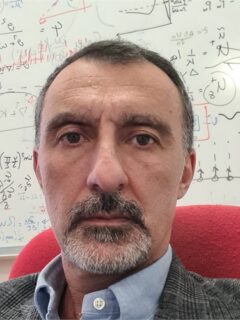Sergio Pirozzoli
Prof. Sergio Pirozzoli
Summary of the DLES talk
On Use of DNS to Extrapolate the State of Wall Turbulence at Extreme Reynolds
Turbulent flow in a straight pipe with a circular cross-section is investigated up to a friction Reynolds number of approximately 12000 through direct numerical simulation (DNS) of the Navier-Stokes equations, using 1024 GPUs on the Leonardo machine. At this Reynolds number, universality in velocity spectra is observed in both inner and outer layers, revealing the presence of large-scale azimuthal modes. Mean velocity profiles provide evidence of an emerging genuine logarithmic layer with a Karman constant of 0.375. Analysis of the streamwise velocity spectra in the near-wall layer supports universal behavior with power-law scaling distinctly different than expected from the attached-eddy model. Extrapolation of this behavior to infinite Reynolds number leads to saturation of the growth of the inner-scaled velocity variance, including its inner-layer peak. Hence, strict wall scaling should be restored in the infinite-Reynolds number limit. The projected asymptotic state of wall turbulence also includes an outer peak surpassing the inner-layer peak in the limit. One of the other important inferences is that the impact of superstructures on the near-wall region should diminish slightly with increasing Reynolds number.
Career Highlights
Sergio Pirozzoli is a professor of Fluid Mechanics at the Sapienza University of Rome. His research interests include numerical simulation of turbulent incompressible and compressible flows, and high-performance computing. During his career, he has contributed to the numerical study of shock/boundary layer interactions by developing novel energy-consistent and shock-capturing schemes, and editing a paper on “Numerical Methods for High-Speed Flows” in the Annual Review of Fluid Mechanics in 2011. In 2016 he was elected Fellow of the American Physical Society-Division of Fluid Dynamics with mention of his work on compressible flows. He is currently involved in the direct numerical simulation of incompressible wall-bounded flows and heat transfer at high Reynolds number using HPC resources. He is associate editor of Theoretical and Computational Fluid Dynamics and Computers in Fluids. He is the chairman of the Sapienza PhD program in Aerospace Engineering.


